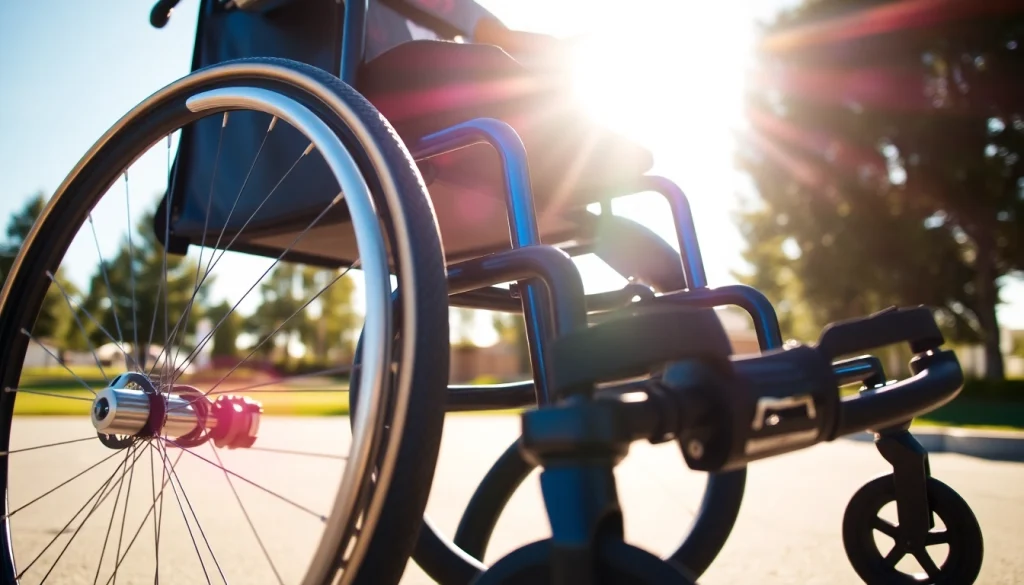Understanding Manual Wheelchairs
Manual wheelchairs have long been an essential mobility aid for individuals with limited mobility. Unlike their electric counterparts, manual wheelchairs rely on user power for propulsion, providing a unique set of advantages and challenges. Understanding how to choose and effectively use a manual wheelchair can greatly enhance the quality of life for users and their caregivers. This article delves deep into manual wheelchairs, discussing their features, benefits, user considerations, challenges, and best practices for use.
What is a Manual Wheelchair?
A manual wheelchair is a mobility device designed for individuals who need assistance with mobility but possess the ability to self-propel the wheelchair using their hands or feet. These wheelchairs can be lightweight or heavy-duty, designed chiefly for the user’s needs. They come in various styles to accommodate the diverse requirements of individuals, making them a versatile choice for many.
Key Features of Manual Wheelchairs
Manual wheelchairs come with several features that can be tailored to enhance user experience. Key features include:
- Frame Material: Options typically include aluminum for lightness and steel for durability.
- Seat Width and Depth: Personalization options help ensure comfort and proper fit.
- Wheels: Various wheel sizes and types, including quick-release options for ease of transport.
- Brakes: Different brake mechanisms for ease of use by the user or caregiver.
- Footrests: Adjustable or swing-away footrests to accommodate user comfort and proper leg positioning.
Benefits Over Electric Options
Manual wheelchairs offer several distinct advantages compared to electric wheelchairs:
- Cost-Effective: Generally more affordable than electric models.
- Lightweight and Portable: Easier to transport and maneuver in tight spaces.
- Physical Activity: Encourages upper body strength and can be more engaging for users, promoting a sense of independence.
- Low Maintenance: Fewer electronic components mean simpler maintenance and repairs.
Choosing the Right Manual Wheelchair
Selecting the appropriate manual wheelchair is crucial for comfort and usability. Factors influencing the decision include the user’s needs, lifestyle, and the specific features of the wheelchair.
Assessing User Needs and Lifestyle
Understanding the individual’s mobility requirements, daily activities, and lifestyle is critical when choosing a wheelchair. Questions to consider include:
- Will the wheelchair be used primarily indoors, outdoors, or both?
- Is the user expected to self-propel, or will they need assistance?
- What level of physical ability does the user have?
Different Types of Manual Wheelchairs
There are various types of manual wheelchairs available, each suited for different needs:
- Standard Wheelchairs: For general use and often the most economical choice.
- Lightweight Wheelchairs: Designed for easier transport and reduced physical effort in propulsion.
- Sports Wheelchairs: Engineered for specific sports and recreational activities.
- Pediatric Wheelchairs: Sized and designed for children’s specific needs.
Factors to Consider: Ergonomics and Comfort
Ergonomics play a vital role in wheelchair design. A well-fitted wheelchair enhances comfort and usability, reducing the risk of pressure sores or discomfort:
- Seat Height: Proper height allows users to reach ground level and transfer easily.
- Backrest Position: Adjustable options can help support the user’s posture.
- Custom Cushions: Specialized cushions can further enhance comfort and pressure relief.
Common Challenges with Manual Wheelchairs
While manual wheelchairs offer many benefits, users often face unique challenges that can affect their mobility and quality of life:
Accessibility Issues in Different Environments
Accessing public spaces can be daunting for manual wheelchair users. Many environments lack appropriate entryways, ramps, and designated pathways. Some common challenges include:
- Uneven Surfaces: Potholes and rough surfaces can impede smooth travel.
- Steps and Curbs: Lack of ramps limits access to certain areas.
- Narrow Doorways: Many buildings do not accommodate wheelchair access effectively.
Maintenance and Upkeep Considerations
Regular maintenance ensures that a manual wheelchair functions efficiently. Essential upkeep tasks include:
- Wheel Cleaning: Regular cleaning to prevent buildup that can affect performance.
- Inspection of Tires: Checking air pressure and overall condition to ensure safety.
- Check for Wear and Tear: Identifying parts that may need replacement over time.
Tips for Maneuvering Effectively
Effective maneuvering can greatly enhance the usability and enjoyment of mobility for the user. Techniques include:
- Turning: Use momentum and lean slightly into the turn to navigate corners.
- Going Up and Down Ramps: Lean forward when ascending and backward when descending to maintain balance.
- Handling Obstacles: Develop techniques for overcoming curbs and small barriers.
Best Practices for Using a Manual Wheelchair
To maximize the functionality and comfort of a manual wheelchair, adhering to best practices is essential. Users and caregivers should be equipped with knowledge and strategies for effective usage.
Safety Tips for Users and Caregivers
Safety should be prioritized to prevent accidents or injuries. Key safety practices include:
- Proper Use of Brakes: Always engage brakes when stationary, especially when transferring.
- Awareness of Surroundings: Pay attention to the environment and potential hazards.
- Assistance When Needed: Always ask for support when navigating difficult terrains.
How to Maximize Comfort and Functionality
Comfort can affect user experience significantly. Here are some tips to enhance comfort:
- Regular Position Changes: Shift positions frequently to reduce the risk of pressure sores.
- Cushions: Experiment with different cushions designed for specific needs.
- Personal Accessories: Consider add-ons like lap trays and cup holders for convenience.
Training Resources and Support Groups
Connecting with support networks can provide valuable information and emotional support. Resources to consider include:
- Local Mobility Centers: Organizations dedicated to assisting individuals with mobility challenges.
- Online Communities: Forums and social media groups where experiences can be shared.
- Workshops and Training Sessions: Opportunities to learn new skills for effective wheelchair use.
Tracking Performance and Improvement
Monitoring mobility progress can play a crucial role in personal development for manual wheelchair users. It helps identify areas for further improvement and ensures effective strategy adjustments.
Measuring Mobility Progress Over Time
Several methods exist for measuring mobility progress. Important factors to track may include:
- Distance Propelled: How far the user can travel in a determined time frame.
- Speed: Examining the user’s speed over time to spot improvements.
- Comfort Levels: Self-reported metrics on comfort and usability can provide personal insights.
Using Technology for Enhanced Tracking
Modern technologies can aid in tracking performance. Apps and wearable devices can monitor motion, speeds, and distances. They can also provide detailed analytics, enabling users to visualize their progress and adjust their practices accordingly.
Real-life Success Stories and Testimonials
Hearing from individuals who have successfully navigated the challenges of using a manual wheelchair can be inspiring. These narratives offer a glimpse into the positive impacts of a properly chosen wheelchair on personal and social mobility:
- Story 1: A young athlete who transitioned from basic mobility to competing in wheelchair sports.
- Story 2: An older individual achieving remarkable independence after choosing an appropriate manual wheelchair.


